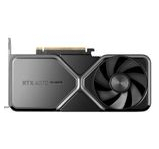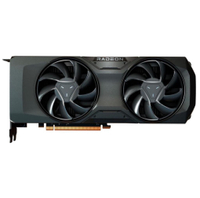Originally launched as a China-exclusive, AMD’s surprise global launch of the 7900 GRE shakes up the midrange GPU market by dropping a new card that goes toe-to-toe with Nvidia’s best midrange GPU and is a strong contender for the best entry-level 4K graphics card on the market for the price of the RTX 4070.
Pros
- +
Best-in-class performance
- +
16GB VRAM
- +
Costs the same as the RTX 4070
Cons
- –
Still expensive
- –
No AMD reference card
- –
Still loses to Nvidia cards in 3D modeling
Why you can trust TechRadar We spend hours testing every product or service we review, so you can be sure you’re buying the best. Find out more about how we test.
AMD Radeon RX 7900 GRE: Two-minute review
The AMD Radeon RX 7900 GRE was originally launched in China back in July 2023, and from what everyone was told, that card was going to be exclusive to that region.
Well, following the launch of the RTX Super series of GPUs last month, AMD’s decided to surprise everyone and launch the RX 7900 GRE globally, starting this week, and it looks primed to upend the midrange GPU market in a pretty huge way.
That’s because the RX 7900 GRE (Golden Rabbit Edition) is going on sale starting at $549, which puts it directly in competition with the Nvidia RTX 4070 on price, and undercuts the Nvidia RTX 4070 Super by offering competitive performance for just over 90% of the cost.
To be clear, the card that is being released globally is the same card that has already been available for Chinese consumers, and so it has been extensively benchmarked for months, with much of that data freely available online for everyone to see.
This has no doubt driven much of the global interest in the RX 7900 GRE since it originally launched back in July, and I fully expect this card to fly off the shelves since it is without question one of the best graphics cards for the midrange you’re going to find.
In terms of raw synthetic performance, the RX 7900 GRE follows the familiar AMD-Nvidia pattern where the Radeon card is better at pure rasterization while the GeForce card is the better ray-tracer, but the difference between the RX 7900 GRE and the RTX 4070 Super in ray-tracing performance isn’t as wide as it might have been last generation.
What’s more, when it comes to gaming, Nvidia’s advantage in native ray tracing is overcome by the RX 7900 GRE as soon as you bring upscaling into the mix, which you invariably have to do whenever ray tracing above 1080p is involved.
The RX 7900 GRE is even a much more capable creative card than I was expecting, so long as you’re not working with CUDA, but for graphic designers, photographers, and video editors, this is a surprisingly powerful GPU for a lot less money than it’s rivals.
Overall, the AMD Radeon RX 7900 GRE isn’t so powerful that it completely knocks out Nvidia’s RTX 4070 Super, but it’s hitting Nvidia’s newest GPU a lot harder than I think Nvidia was expecting so soon after launch. Unfortunately, this does put the only-slightly-cheaper-but-not-as-good AMD Radeon RX 7800 XT in a bit of an awkward position, but for gamers looking to get the best performance for their money, more options are better in this case.
AMD Radeon RX 7900 GRE: Price & availability
- How much does it cost? $549 (about £440/AU$770)
- When is it available? Available now
- Where can you get it? Available in the US, UK, and Australia
The AMD Radeon RX 7900 GRE is available starting February 27, 2024, with a US MSRP of $549 (about £440/AU$770). This is the same price as the Nvidia RTX 4070, $50 less than the RTX 4070 Super, and $50 more than the RX 7800 XT.
This launch doesn’t include an AMD reference card, so you will need to buy the RX 7900 GRE from third-party partners like ASRock, Gigabyte, Sapphire, and others. The sample I was sent for review is the PowerColor Hellhound RX 7900 GRE, a model line that typically sells for AMD’s MSRP or below (when on sale).
AMD Radeon RX 7900 GRE: Features & specs
Swipe to scroll horizontally
| Header Cell – Column 0 | AMD Radeon RX 7900 XT | AMD Radeon RX 7900 GRE |
|---|---|---|
| Price | $749 (about £600 / AU$1,050) | $549 (about £440/AU$770) |
| GPU | Navi 31 | Navi 31 |
| Compute Units | 84 | 80 |
| Shaders | 5,376 | 5,120 |
| Ray processors | 84 | 80 |
| AI/Tensor processors | 336 | 320 |
| Base clock | 1,500 MHz | 1,287 MHz |
| Boost clock | 2,394 MHz | 2,245 MHz |
| Memory Clock | 2,500 MHz | 2,250 MHz |
| Memory type | GDDR6 | GDDR6 |
| Memory pool | 20 GB | 16 GB |
| Memory speed (effective) | 20 Gbps | 18 Gbps |
| Memory bandwidth | 800.0 GB/s | 576.0 GB/s |
| Bus interface | 320-bit | 256-bit |
| TGP | 300W | 260W |
| Required power supply | 700W | 700W |
| Power connector | 2 x 8-pin | 2 x 8-pin |
| Outputs | 3 x DisplayPort 1.4b, 1 x HDMI 2.1 | 3 x DisplayPort 1.4b, 1 x HDMI 2.1 |
The AMD Radeon RX 7900 GRE is a modified Navi 31 GPU with four fewer compute units than the AMD Radeon RX 7900 XT, as well as slower clock speeds. It’s power requirements are also officially lower at a starting TGP of 260W, but this will vary by which card you go for.
The Radeon RX 7900 GRE also has 16GB GDDR6 VRAM to the RX 7900 XT’s 20GB, and while the RX 7900 XT has a 320-bit memory bus, the RX 7900 GRE has a slimmer — but still sizeable — 256-bit bus. With a memory clock of 2,250 MHz (compared to the RX 7900 XT’s 2,500 MHz), the RX 7900 GRE comes in with an effective memory speed of 18 Gbps and a memory bandwidth of 576 GB/s, which is a notable decline from the RX 7900 XT’s 800 Gbps and 800 GB/s, respectively.
Also notable are the two 8-pin power connectors, which won’t require you to fuss around with a 16-pin connector like Nvidia’s latest graphics cards require you to do, whether that’s through an adapter or an ATX 3.0 power supply.
AMD Radeon RX 7900 GRE: Design
While there is an AMD reference card for the RX 7900 GRE, AMD has said that global availability will only come through AIB partners, so the design you get with your card will vary by manufacturer.
The card I tested, the PowerColor Hellhound RX 7900 GRE, sports a triple-fan cooler with RGB lighting in the fan. It’s a long card to be sure, and even though it’s technically a dual-slot card, the shroud makes for a tight fit.
The backplate of the Hellhound RX 7900 GRE has some notable features, like the Hellhound logo, the exposed GPU bracket, and a hole in the backplate opposite the third fan to leave an open path for air to pass over the GPU cooler’s heatsink fins to improve cooling efficiency.
AMD Radeon RX 7900 GRE: Performance
Now we come to the heart of the matter. I can’t tell if AMD was inspired by the release of the Nvidia RTX 4070 Super or not, but whatever convinced Team Red to bring the RX 7900 GRE out of China to the rest of the world, midrange gamers everywhere should be grateful because this is easily the best midrange graphics card on the market right now.
Starting with synthetic benchmarks, the typical rasterization-ray tracing divide between AMD and Nvidia remains, but like we’ve seen with other cards this generation, the gap is narrowing. The Nvidia 4070 and RTX 4070 Super definitely pull ahead in terms of raw compute performance, but overall, the RX 7900 GRE is the champ of the under-$600s.
For creative use, the RX 7900 GRE is the strongest rasterizer, but lags Nvidia with video editing, and serious stumbles when it comes to 3D rendering as seen in Blender Benchmark 4.0.0.
When it comes to gaming, though, the RX 7900 GRE is the clear winner among midrange cards, with spectacular 1080p and 1440p gaming performance, with only slightly worse ray tracing performance than the RTX 4070 Super.
As a 4K graphics card, however, the RX 7900 GRE isn’t that far behind the RTX 4070 Ti, with the former getting an average 55 fps (30 fps minimum) and the latter getting an average of 63 fps (minimum 42 fps). The RTX 4070 Super, meanwhile, only averages 41 fps at 4K, with a minimum of 28 fps.
Ultimately, the RTX 4070 Super can’t really be considered among the best 4K graphics cards, but the RX 7900 GRE definitely can, thanks to its wider memory pool and larger memory bus.
Of course, this performance comes at the cost of power draw. You can throw the official 260W TGP right out the window here, with the RX 7900 GRE pulling down 302W, but the strong cooling performance on the PowerColor Hellhound card did manage to keep the RX 7900 GRE below 53 degrees Celsius.
Overall, then, there’s just no getting around the fact that the RX 7900 GRE effectively outperforms any other card in the midrange. And despite the RX 7900 GRE falling well short of the RTX 4070-series GPUs overall, it’s worth keeping in mind that with Photoshop and similar rasterization-dependent programs, the RX 7900 GRE performs the best, and it doesn’t fall too far behind the RTX cards when it comes to video editing.
The weakness of the RX 7900 GRE is that most, if not all, 3D modeling software relies so heavily on Nvidia’s CUDA that it heavily skews the creative performance averages, that it can be somewhat deceptive—unless you NEED this graphics card for 3D modeling. If that’s the case, nothing else matters, and you need to go with an RTX 4070-class graphics card despite the RX 7900 GRE’s superior performance everywhere else.
How many people will that stipulation apply to ultimately? Not enough to hold the RX 7900 GRE from claiming the crown as the best graphics card in the midrange, and since its final value score is just shy of the RX 7800 XT’s, there really isn’t any reason to opt for any other card right now. The RX 7900 GRE is honestly just that good.
Should you buy the AMD Radeon RX 7900 GRE?
Buy the AMD Radeon RX 7900 GRE if…
You want the best midrange graphics card
The AMD Radeon RX 7900 GRE is the best overall graphics card for under $600 you can get.
You want to game at 4K
Thanks to the RX 7900 GRE’s 16GB VRAM and wide memory bus, you can absolutely game effectively at 4K with this card.




